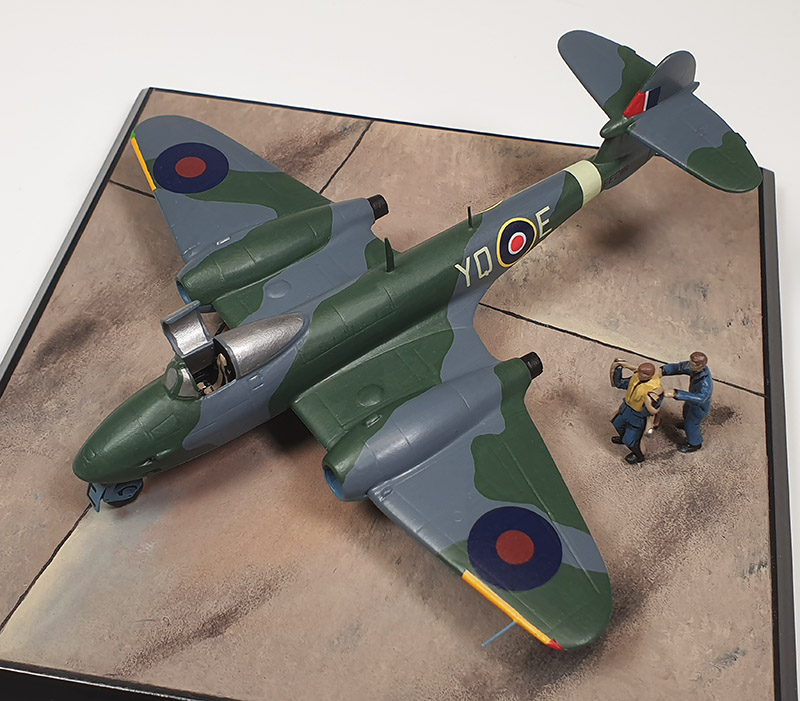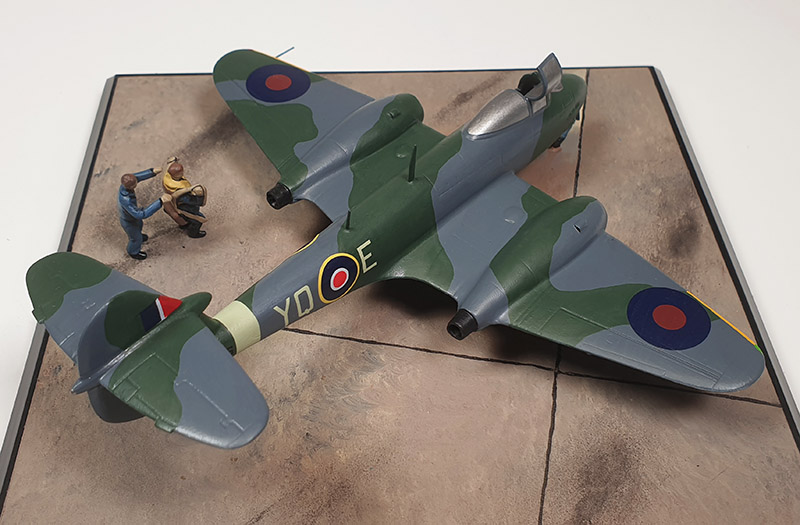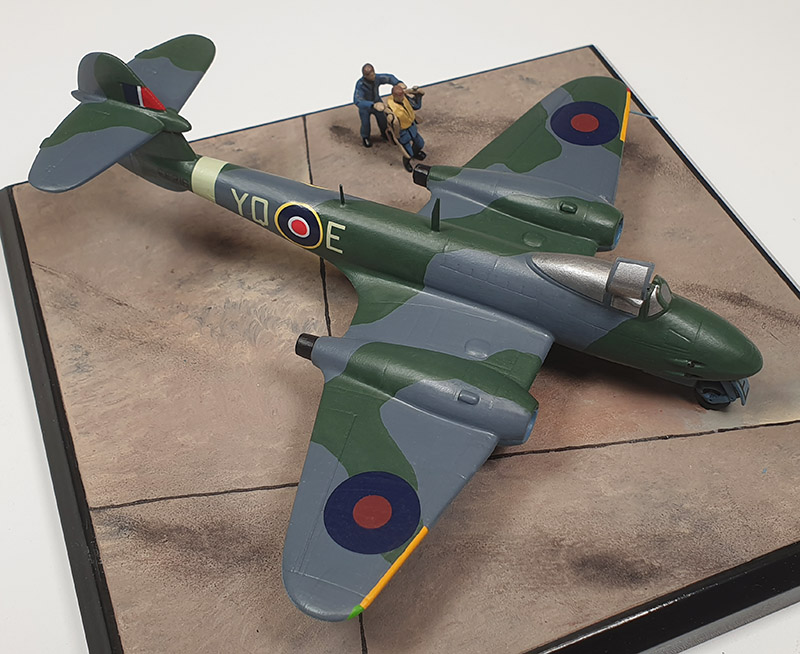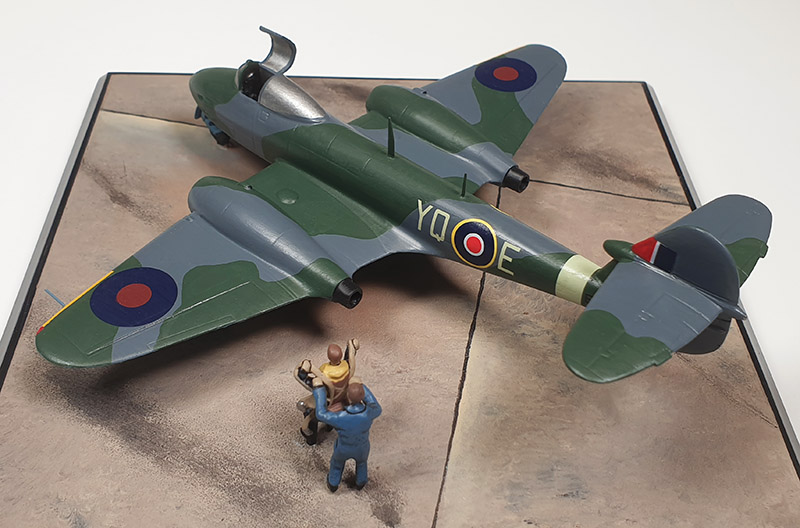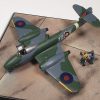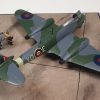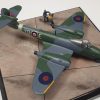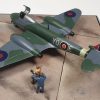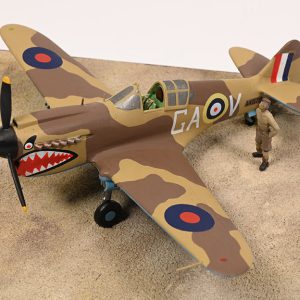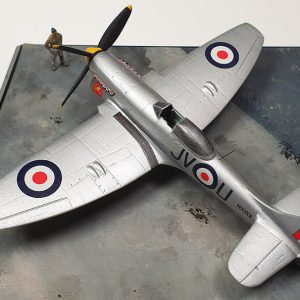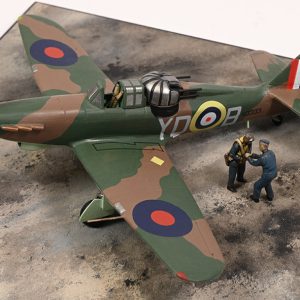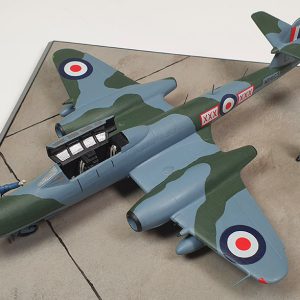Gloster Meteor F Mk I EE216 YQ-E 616 Squadron,
Fg.Off. ‘Dixie’ Dean, RAF Manston, August 4th 1944
The RAF’s first jet fighter was conceived in response to Air Ministry Specification F.9/40, and the Ministry of Aircraft Production placed an order for the first twelve in February 1941, three months before the first British jet aircraft flew. Gloster’s F.9/40 was two have two of the new engines, it being recognised that one would not give sufficient power to give the performance necessary for combat. It was originally intended to call the aircraft “Thunderbolt”, but with that name being taken by Republic’s big P-47 in March 1942 it was changed to “Meteor”. A variety of engines was used to power the twelve aircraft of the development batch, but the twenty Mark Is ordered in September 1941 were to be powered by the Rolls-Royce Welland, each giving 1,700 lbs of thrust. Sixteen Gloster Meteors were to be delivered to the RAF, the first two service aircraft – EE213 and 214 – being delivered to 616 Squadron on 21 July 1944. These two were not of an operational standard, but two days later five more, that were fully effective, arrived.
616 (South Yorkshire) Squadron was formed at Doncaster in November 1937, as part of the Royal Auxiliary Air Force, as a bomber squadron initially with Hawker Harts, but within six weeks was transferred to Fighter Command. In January 1939 it began to receive Gloster Gauntlets and with the outbreak of war it, like the other Auxiliary squadrons, was subsumed in to the regular RAF. In October 1939 it was re-equipped with Spitfire Mk Is; moving south in May 1940 to take part in operations over Dunkirk, it returned to Yorkshire ten days later. The squadron alternated between North-East and South-East coasts for the rest of 1940, and continued to fly Spitfires of later marks until mid-1944. In May it moved to Culmhead in Somerset, flying reconnaissance sorties over northern France, and it was there that it received its first Meteors. The squadron’s work-up on the Gloster Meteor coincided with the arrival of the V-1 flying bombs – codenamed “Diver” – over London; the use of the new jet was seen as an effective countermeasure and it was moved to Manston on 21 July. “Dixie” Dean’s, and the squadron’s, first kill was on 4 August. This excerpt from the squadron records is copied from boards.history.com.
“F/O Dean took off from Manston at 1545 to patrol inland area under Kingsley II (Biggin Hill) Control. At 1616 hours a Diver was sighted at 1000 ft near Tonbridge on course of 330°, at speed of 365 IAS. Dean dived down from 4500 ft at speed of 450 mph, and attacked from dead astern; his 4 x 20mm cannons failed to fire owing to a technical trouble now being investigated, so flying level alongside the bomb, Dean manoeuvred his wing tip a few inches under the wing of the flying bomb and by pulling upwards sharply he sent the bomb diving to earth four miles South of Tonbridge. F/O J.K.Rodger sighted a Diver at 1640 hrs. near Tenterden on course of 318° at 3000 ft speed 340 mph. Attacking from astern Rodger fired 2 bursts of 2 seconds and saw the Diver crash and explode, 5 miles N.W. of Tenterden. The Squadron now thrilled at the first two kills are ready for more.”
Fg.Off. Dean got a second V-1 three days later with his guns, and thirteen V-1s were confirmed killed by the squadron by the time the launches stopped. By the end of the year 616 was re-equipping with the Meteor III with more powerful engines, and a detachment was sent to the continent as part of the Second Tactical Air Force in March 1945 as a possible counter to any Messerschmitt Me 262 action. The squadron finished the war at Lubeck, but without being able to engage in combat against an Me 262.


